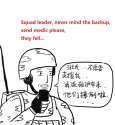India’s strategic illusions, delusion and hallucinations
New Delhi is headed for trouble in Ladakh and the broader region if it repeats past mistakes on dealing with Beijing
by Bhim Bhurtel June 5, 2020
Indian strategists have been suffering from illusion, delusion, and hallucination since their country’s independence from the British Empire. Their
illusions are connected to India’s perception of itself. They harbor
delusions in their perception of strategic support made available by superpowers and experience
hallucinations when looking toward China.
The military standoff between the Indian and Chinese armies at Ladakh for the last three weeks tells a tale of a strategic dilemma that could prove a severe setback to India in the future.
The Ladakh standoff
The recent Sino-Indian military standoff at Ladakh is not an ugly dispute over the barren land in the high Himalaya. It is a manifestation of Asian powers’ moves on the geo-strategic chessboard. Several issues have resulted in China’s resentment against India and have caused Beijing to mount pressure on New Delhi.
First, India backed a joint effort by Australia and the European Union calling for an independent inquiry into the World Health Organization’s response to the Covid-19 pandemic, according to a draft resolution proposed for the 73rd World Health Assembly meeting held in Geneva on May 18.
Second, India’s external affairs minister, Subrahmanyam Jaishankar, participated in a seven-nation virtual meeting of foreign ministers recently convened by US Secretary of State Mike Pompeo, in what was seen as the US attempt to pave the way for full membership of Taiwan in the WHO.
The meeting was attended by the foreign ministers of Australia, Brazil, Israel, Japan and South Korea. All are US non-NATO allies, and they have always supported Washington’s any demand.
Besides, New Delhi plans to send government ministers to Taiwan to explore cultural and commercial cooperation. India is looking for technological assistance from Taiwan in electronics, fifth-generation (5G) telecom technology, semiconductors, and health-care technology. From Beijing’s point of view, this is evidence of New Delhi backing away from its commitment to the one-China policy.
Third is India’s increasing participation in the US-led Quadrilateral alliance in the Indo-Pacific region. The Quad facilitates India’s defense and security ties with the US, Japan and Australia, based on the United States’ strategy that stresses international cooperation, transparency, and openness in the region. India’s covert support for the US strategy in the South China Sea has resulted in Beijing’s further suspicion.
Fourth, last month, Prime Minister Narendra Modi’s government announced the prohibition of Chinese investments in India, a step China called discriminatory and a violation of World Trade Organization rules.
Fifth, India dropped the idea of participating in the Asia-Pacific Regional Comprehensive Economic Partnership at the last minute. The RCEP is a flagship free-trade partnership proposed by China for regional trade agreements among the Association of Southeast Asian Nations, South Korea, Japan, Australia, New Zealand and India.
Sixth, Indian strategists indulged in a gross overestimation when concluding that China’s losses due to the Covid-19 pandemic would turn out to be India’s gain. They deduced that a vast number of American companies would relocate to India in the aftermath of the pandemic.
However, facts on the ground suggest only 5% of American factories in China relocated to India after the US-China trade war started in March 2018. The American companies’ preferred relocations were not to India but to Vietnam, Thailand or Taiwan.
The Global Competitive Report suggests India lags behind China in all infrastructure Indicators. The president of the US-India Business Council at the American Chamber of Commerce, Nisha Desai Biswal, corroborated the facts in an interview with The Print.
Last, India has further antagonized China because Modi hasn’t fulfilled the promises made during the informal summits with Chinese President Xi Jinping in Wuhan and Mamallapuram.
For example, Chinese Foreign Ministry spokesman Zhao Lijian, without referring to any particular agreement,
last month, “We urge the Indian side to work together with us, abide by our leadership’s important consensus, comply with the agreements signed, and refrain from unilateral actions complicating the situation.”



